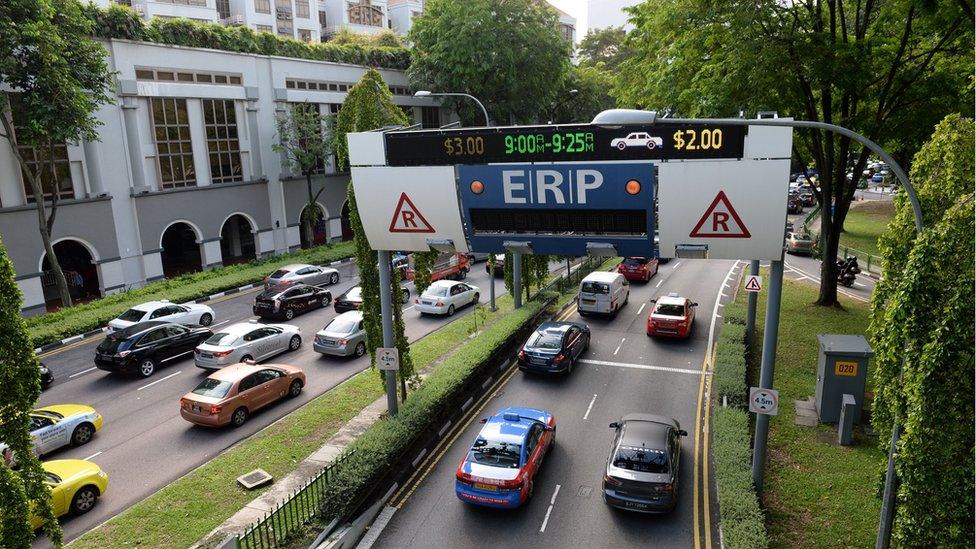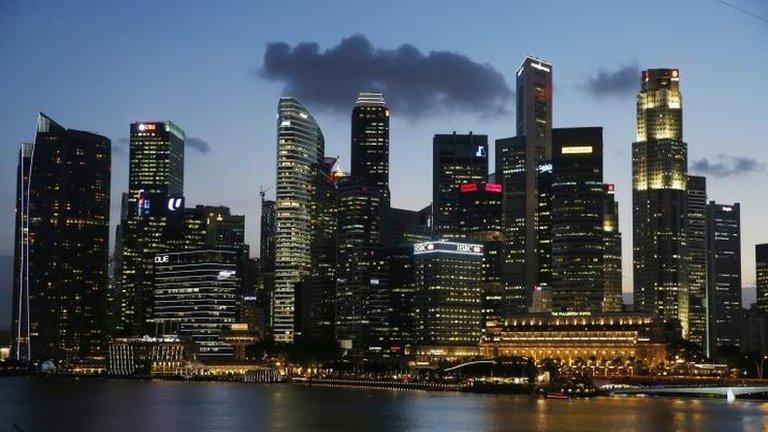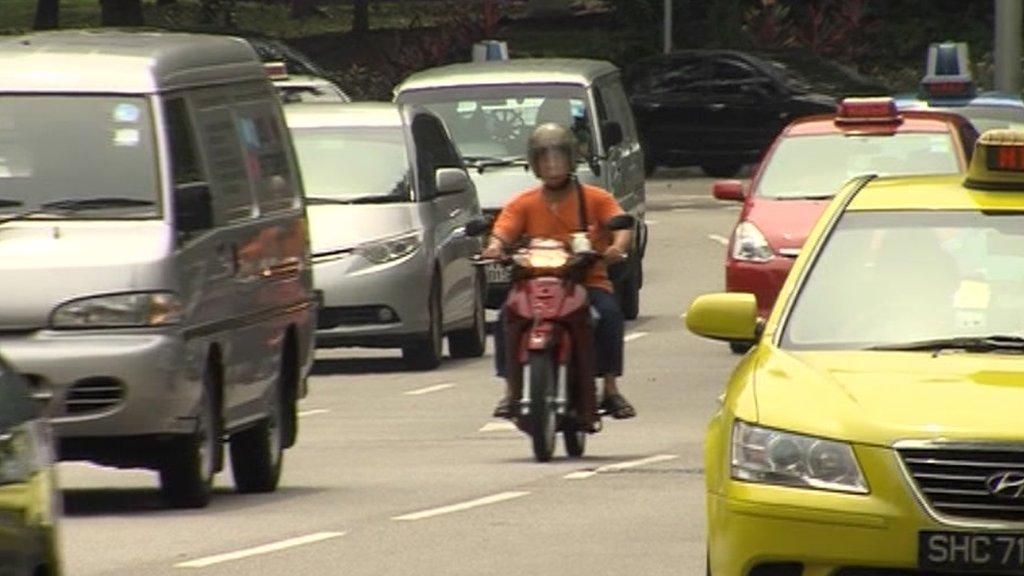Singapore to freeze car numbers
- Published

Singapore will freeze the number of vehicles on its roads from next February.
The Land Transport Authority (LTA) cited the scarcity of land and public transport upgrades as reasons for the cap.
The tiny, densely populated country has strict policies aimed at limiting the number of cars on its roads.
As a result, car ownership rates are far lower in Singapore than in other wealthy countries.
Permit system
In addition to caps, Singapore has a deliberate policy of elevating the cost of owning a car in an effort to reduce the number of vehicles on the road.
It does this through a system which requires bidding for the right to own and use a vehicle for a limited number of years, known as a Certificate of Entitlement (COE).
As a result, a mid-range car in Singapore can typically cost about four times as much as it would in the United States.
The LTA said the new cap won't significantly affect the number of available COEs, because most of them aren't newly created, and instead come from deregistered cars.
The new growth cap is slightly lower than the existing 0.25% limit, which has been in place since 2015.
It applies to private cars and motorcycles, but not to goods vehicles and buses.

Singapore cars: By the numbers
A recent Deutsche Bank report found a new midsize car costs around $90,000 in Singapore. The same car would cost about $24,000 in the UK and the US
Singapore's car ownership rate is roughly 11%. In the US, it is nearly 80% and it is just under 50% in Europe
Singapore ranked 55th on a global congestion index by navigation firm TomTom. Jakarta ranked 2nd, and Bangkok 3rd in the same congestion index

Transport upgrades
Despite the government's policies, there are nearly one million vehicles on Singapore's roads. Just over 600,000 of those are private and rental cars, including cars used by ride-hailing services such as Uber and Grab.
The LTA said there are limitations to expanding the tiny country's road network. Roads take up 12% of the country's total land area, which is a far higher percentage than in many larger countries.
In addition to a cap on vehicle growth, the government is trying to deal with congestion by investing heavily in the country's public transport network.
It has added 41 new train stations over the past six years, expanding the city-state's network by 30%.
Singapore is investing $20bn Singapore dollars ($14.9bn; £11.1bn) in new rail infrastructure, $4bn to upgrade existing infrastructure and $4bn in bus contracting subsidies.
- Published10 March 2016

- Published24 August 2017

- Published25 June 2012
